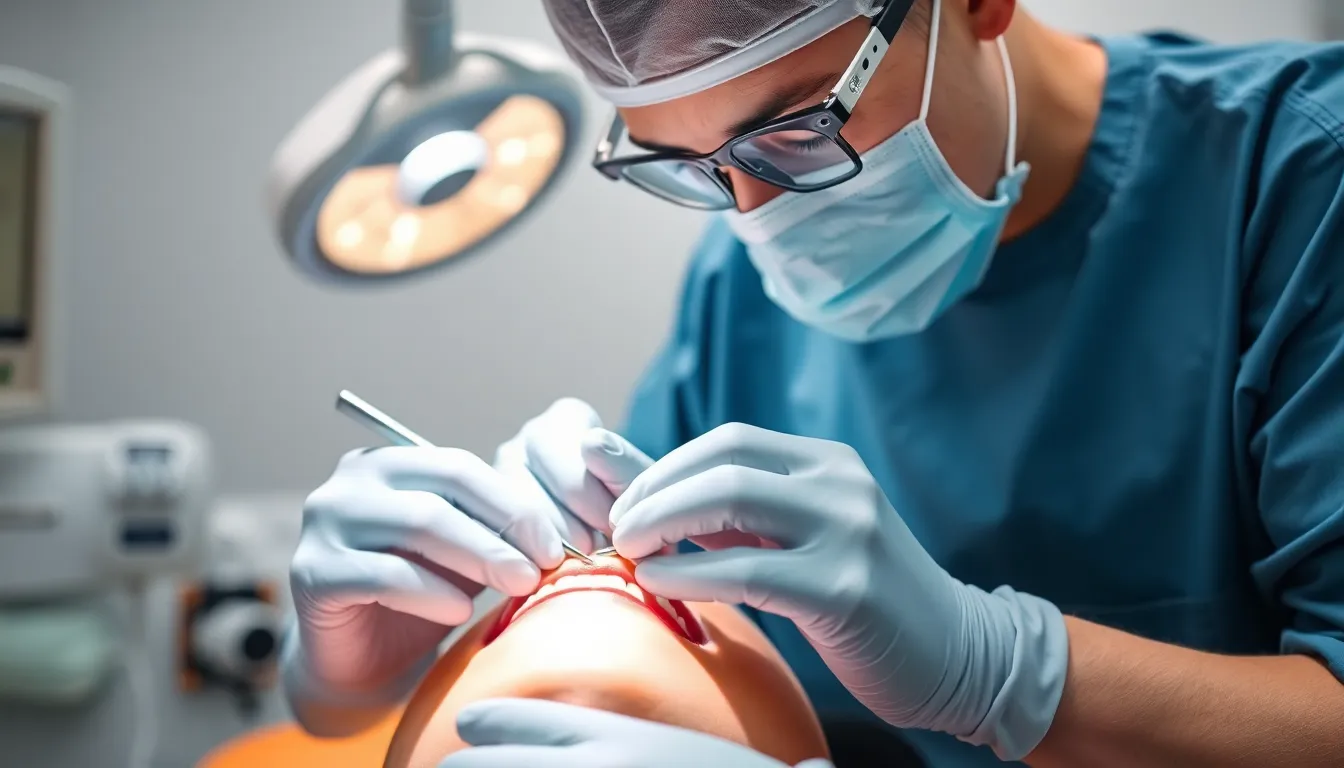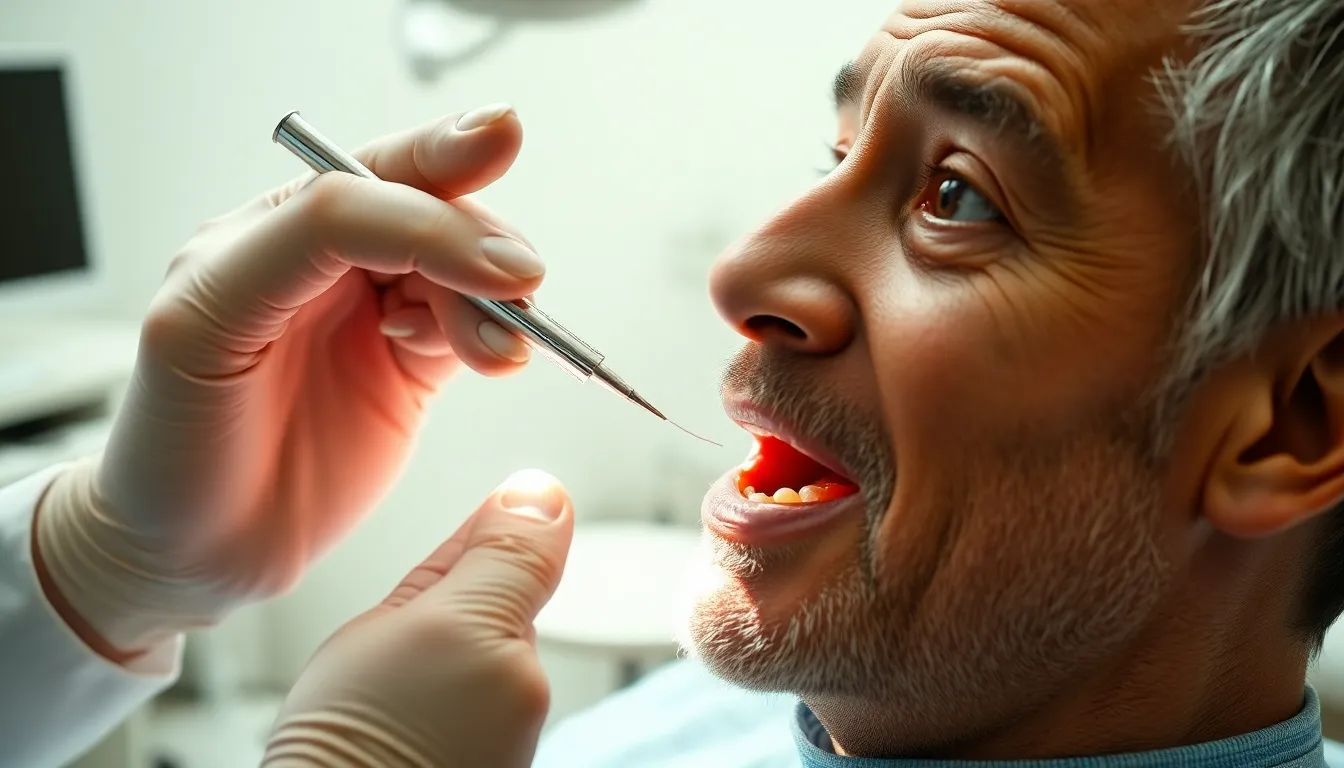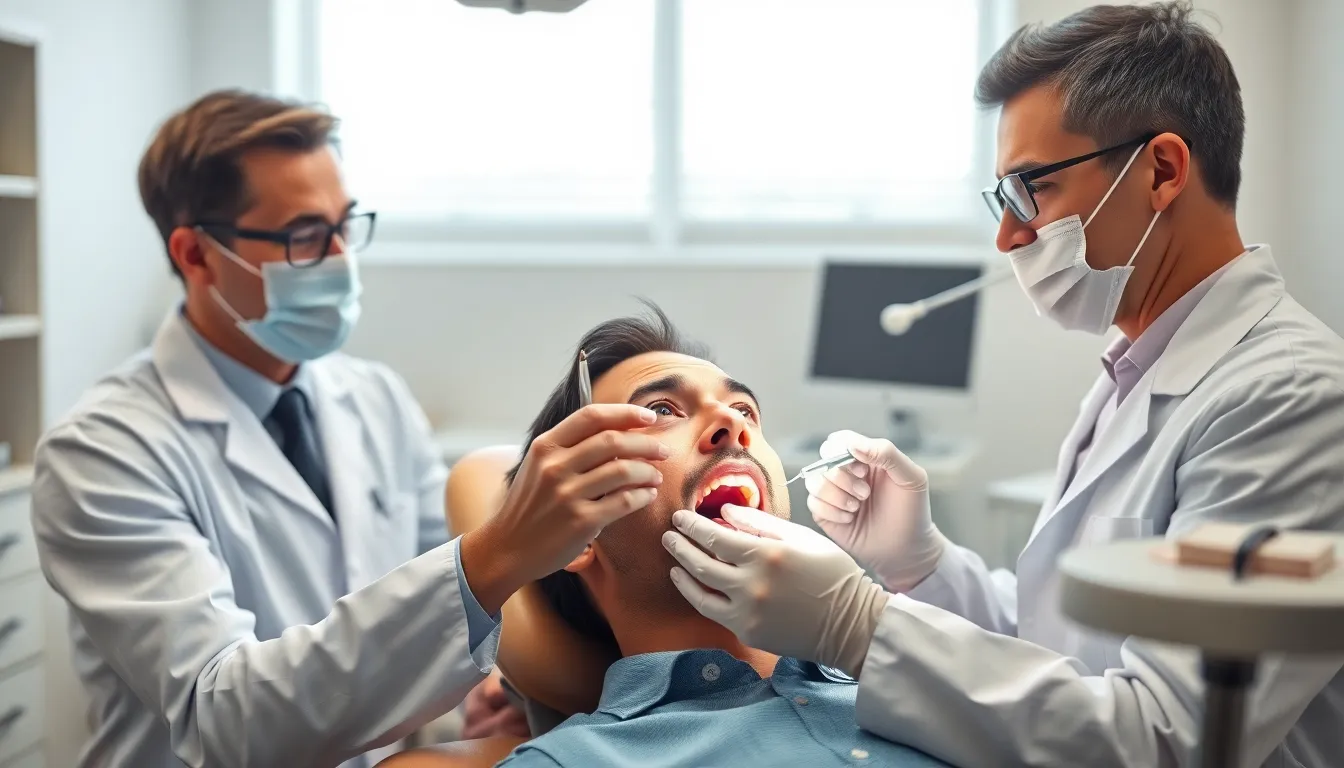Are you self-conscious about your “gummy smile” or uneven gum line? Cosmetic gum surgery offers a solution that can transform your smile and boost your confidence in just one procedure.
When you smile, the harmony between your teeth and gums creates a lasting impression. Too much gum tissue can make teeth appear short, while receding gums might make them look unusually long. Modern dental techniques now provide minimally invasive options to reshape your gum line, creating the perfect frame for your teeth without extensive recovery time.
Whether you’re considering gum contouring, crown lengthening, or gum grafting, understanding your options is the first step toward achieving the smile you’ve always wanted. The results can be dramatic, with many patients reporting not just aesthetic improvements but also enhanced oral health.
What Is Cosmetic Gum Surgery?
Cosmetic gum surgery encompasses procedures designed to reshape and recontour the gum tissue for aesthetic enhancement. These surgical techniques address both excessive gum tissue display and gum recession to create a harmonious balance between teeth and gums.
Common Types of Cosmetic Gum Procedures
Gum contouring (gingivectomy) removes excess gum tissue that creates a “gummy smile,” exposing more tooth surface for a balanced appearance. Crown lengthening combines gum tissue removal with minor bone reduction to reveal more of the tooth crown, often performed before restorative dental work. Gum grafting treats receding gums by transplanting tissue to cover exposed tooth roots, protecting sensitive areas and improving appearance. Gum depigmentation addresses dark or discolored gums through laser therapy or surgical removal of the darkened tissue layer.
Dr. Harris notes, “Many patients don’t realize that reshaping their gum line can dramatically transform their smile. I’ve seen patients gain incredible confidence after these relatively simple procedures.”
Candidates for Gum Reshaping
Ideal candidates for cosmetic gum surgery have good oral health without active gum disease or important tooth decay. Patients with excessive gum display showing more than 3-4mm of gum tissue when smiling benefit significantly from contouring procedures. Those with uneven gum lines or asymmetrical gum heights across their smile often experience dramatic improvements. Individuals with exposed tooth roots due to gum recession make excellent candidates for grafting procedures.
Benefits of Cosmetic Gum Surgery

Cosmetic gum surgery offers groundbreaking benefits that extend beyond mere aesthetics. These procedures address both the appearance and health of your gums, creating a harmonious balance that enhances your overall smile.
Aesthetic Improvements
Reshaping and contouring procedures effectively balance your smile by reducing excessive gum exposure or correcting uneven gum lines. Gingival lifts and gum contouring techniques remove excess gum tissue, creating better symmetry throughout your smile. Many patients notice their teeth appear more proportional after aesthetic crown lengthening, which exposes more tooth surface when gums cover teeth excessively.
“I’ve seen patients who’ve spent years hiding their smiles due to what they call a ‘gummy’ appearance,” explains Dr. Todd B. Harris. “After a simple contouring procedure, they can’t stop smiling. The transformation isn’t just physical—it’s emotional.”
Patients experience renewed confidence in their appearance following gum surgery, often smiling more naturally and without hesitation. The psychological impact of these aesthetic improvements extends far beyond the dental chair, affecting social interactions and self-perception in profoundly positive ways.
Functional Advantages
Gum grafts and root coverage procedures protect exposed root surfaces from decay and sensitivity, creating a defensive barrier against potential damage. Your risk of periodontal disease decreases significantly as these surgeries improve gum health and encourage regeneration of healthy tissue.
Dental restorations like crowns and implants gain enhanced support from improved gum contours, ensuring better longevity and fit. Modern laser techniques used in these procedures offer precision with minimal pain, reduced bleeding, and faster healing compared to traditional surgical approaches.
A recent patient shared, “I initially sought treatment because I was unhappy with how my smile looked, but I was amazed to discover my tooth sensitivity disappeared after my gum grafting procedure. What started as a cosmetic concern ended up improving my daily comfort.”
By addressing recession and damage caused by trauma or disease, cosmetic gum surgery contributes significantly to your overall oral hygiene and reduces future dental complications. The dual benefit of enhanced appearance and improved function makes these procedures particularly valuable for maintaining long-term oral health.
The Cosmetic Gum Surgery Process

Cosmetic gum surgery involves several precise steps to transform your smile. The journey from consultation to recovery follows a structured approach designed to ensure optimal results with minimal discomfort.
Initial Consultation and Planning
Your cosmetic gum surgery begins with a comprehensive consultation where your dentist evaluates your gum health and discusses your aesthetic concerns. During this appointment, they’ll examine the condition of your gums and teeth, assessing issues like gum recession, excess tissue, or asymmetry that might be affecting your smile. The dentist creates a customized treatment plan based on your exact needs, explaining different surgical approaches such as traditional methods or advanced laser techniques. “I’ve seen patients walk into the consultation room feeling hesitant about their smile and leave with a clear vision of how we can transform their appearance,” notes Dr. Todd B. Harris, who emphasizes the importance of this planning phase for setting realistic expectations and ensuring patient comfort.
Procedure Techniques
Three main techniques dominate modern cosmetic gum surgery:
- Laser-Assisted Gum Contouring – This minimally invasive approach uses precise laser technology to reshape gum tissue without traditional cutting. Laser procedures like LANAP® target only infected or excess tissue, promoting faster healing and reducing bleeding. Patients typically experience less discomfort since this technique avoids incisions and stitches.
- Traditional Surgery – These methods include gingivectomy (removing excess gum tissue), gingival flap surgery (lifting gums to access teeth and bone), and gingivoplasty (reshaping gum tissue). Traditional approaches involve incisions and possibly stitches, resulting in longer recovery periods but offer effective answers for complex cases.
- Pinhole Surgical Technique (PST) – A revolutionary approach where your dentist creates a tiny pinhole above the gum line using a needle. Special instruments inserted through this opening gently loosen and reposition gum tissue to cover exposed roots. PST requires no scalpel or stitches, dramatically reducing recovery time and post-procedure discomfort.
Recovery Timeline
Recovery from cosmetic gum surgery varies based on the technique used for your procedure. Laser gum surgery and pinhole technique patients typically experience quicker healing with minimal discomfort, often returning to normal activities within days. Many patients report being pleasantly surprised by how comfortable the recovery process feels with these advanced methods.
Traditional surgical approaches like gingivectomy and flap surgery generally require 24-48 hours of rest. Your dentist may place stitches and prescribe medications to manage mild pain during this period. Complete healing takes a few weeks as gums reattach and inflammation subsides.
Risks and Considerations

Cosmetic gum surgery carries exact risks and considerations that patients should understand before proceeding with treatment. While generally safe when performed by qualified professionals, certain factors can affect both candidacy and outcomes.
Potential Complications
Infection remains the primary risk following gum surgery, similar to most surgical procedures. Patients with existing tooth decay or gum disease typically aren’t good candidates for cosmetic gum procedures until these conditions are resolved. Improper surgical technique can lead to several complications including receding gums, exposed tooth roots, and loss of gum papilla (creating unsightly black triangles between teeth).
Poor bone formation or inadequate cleaning during surgery may cause gum pockets to recur, diminishing the procedure’s effectiveness. Low-quality facilities or inexperienced practitioners significantly increase risks of prolonged bleeding, delayed healing, and wound infections. For gum grafts specifically, patients should watch for signs of failure such as tissue discoloration (particularly dark or black tissue indicating necrosis), incomplete coverage of exposed roots, or graft rejection.
“I once treated a patient who had undergone cosmetic gum surgery at a discount clinic,” shares Dr. Harris. “She came to me with important recession and infection because the underlying bone hadn’t been properly contoured. We had to perform corrective surgery that could have been avoided with proper technique initially.”
Health factors like smoking and diabetes can substantially impair healing and increase complication risks. The possibility of gum tissue regrowth exists if underlying bone isn’t adequately removed during the procedure, potentially requiring additional treatments.
Pain Management
Local anesthesia effectively eliminates pain during cosmetic gum surgery, ensuring patient comfort throughout the procedure. Postoperative discomfort, swelling, and minor bleeding typically occur but remain manageable with prescribed medications from your dentist or periodontist.
Your surgeon will provide strict post-surgical care instructions that you must follow diligently. These guidelines include avoiding hard foods, maintaining gentle oral hygiene practices, and attending follow-up appointments to monitor healing progress. Patients experiencing severe pain or signs of infection (increased swelling, fever, pus) should contact their dental provider immediately.
Many patients find that modern techniques like laser gum contouring result in significantly less discomfort than traditional methods. Depending on your exact needs, your dentist might recommend additional aesthetic treatments such as veneers or crowns alongside gum surgery for optimal results.
Cost of Cosmetic Gum Surgery

Cosmetic gum surgery prices vary based on the exact procedure, extent of treatment, and your location. Understanding these costs helps you plan financially for your desired smile transformation.
Gum Graft Surgery
Gum graft surgery in the U.S. costs approximately $2,742 on average, with prices typically ranging from $2,120 to $4,982. Several factors influence the final price tag, including the type of graft needed, how many teeth require treatment, the location of affected teeth, anesthesia options, recession severity, and whether additional contouring is needed. Dr. Harris notes, “Many patients are surprised by the range of prices, but each case is unique—some individuals need just a small section treated while others require extensive grafting across multiple teeth.”
Gum Contouring
Gum contouring costs vary significantly, starting at $50 to $350 per individual tooth. For a complete smile makeover involving multiple front teeth, you’ll typically pay between $1,000 and $3,000. Treating a single tooth costs considerably less than reshaping your entire gum line. One of our patients, Sarah, shared her experience: “I was concerned about the cost at first, but after seeing the dramatic difference in my smile after having my front six teeth contoured, I realized the value was absolutely worth it.”
Insurance Coverage
Dental insurance may partially cover gum graft surgery when it’s medically necessary—such as preventing or treating gum disease. Coverage depends entirely on your exact policy details and the clinical justification provided by your dentist. Purely cosmetic procedures often receive limited or no coverage from standard dental insurance plans. Medicaid and Medicare typically only cover gum grafting in cases where the surgery is essential for treating serious medical conditions.
Choosing the Right Specialist

Finding a qualified specialist for cosmetic gum surgery significantly impacts your treatment outcomes and overall experience. The right professional brings expertise, advanced techniques, and personalized care to your procedure, ensuring optimal results that align with your aesthetic goals.
Qualifications to Look For
Specialists performing cosmetic gum surgery should possess exact educational credentials and professional experience. Seek dentists or oral surgeons with specialized training in cosmetic dentistry or periodontics, as these professionals have advanced knowledge beyond what general dentists typically offer. Board certifications from organizations like the American Board of Periodontology or the American Board of Facial Cosmetic Surgery validate a specialist’s expertise and commitment to high standards. Dr. Harris notes, “Many patients come to me after researching credentials, and they’re often surprised by how much specialization matters in achieving natural-looking results.”
Experience plays a crucial role in provider selection. Check how many years the specialist has been performing gum surgeries and ask about their case volume for procedures similar to yours. Specialists who regularly perform these procedures typically develop refined techniques that enhance outcomes while minimizing complications.
Technology and technique evaluation forms another essential qualification metric. Leading providers use advanced technologies such as dental lasers, digital imaging, and microsurgical instruments that improve precision and reduce recovery time. One patient shared, “My periodontist used laser technology for my gum contouring, which meant I experienced almost no bleeding and was back at work the next day.”
Questions to Ask Your Provider
Prepare a list of exact questions before your consultation to assess your provider’s suitability. Ask about their experience with cosmetic gum surgery, including how many procedures they perform monthly and their success rates. Request to see before-and-after photos of previous patients with conditions similar to yours, which offers visual evidence of their capabilities and aesthetic approach.
Inquire about the exact techniques they use and why they recommend particular approaches for your case. Understanding their procedural methodology helps you gauge both their expertise and whether their recommendations align with current best practices.
Potential risks and complications should be thoroughly discussed. A reputable specialist openly addresses possible side effects such as temporary sensitivity, swelling, or rare complications like infection.
Treatment timeline questions help set realistic expectations. Ask how long the procedure will take, expected recovery duration, and when you’ll see final results. Most specialists offer follow-up care and provide detailed maintenance advice to preserve your results long-term.
Conclusion
Cosmetic gum surgery offers life-changing benefits for those unhappy with their smile’s appearance. Whether you’re dealing with a gummy smile excess tissue or receding gums these procedures can dramatically enhance both aesthetics and oral health.
Today’s advanced techniques like laser contouring and the innovative Pinhole Surgical Technique provide more comfortable experiences with faster recovery times than ever before. While costs vary based on your exact needs most patients find the investment worthwhile for the boost in confidence and oral health.
The key to successful results lies in selecting a qualified specialist who understands your goals. With proper research and the right provider you’ll be on your way to achieving the balanced harmonious smile you’ve always wanted.
Frequently Asked Questions
What is cosmetic gum surgery?
Cosmetic gum surgery refers to procedures designed to reshape and recontour gum tissue for aesthetic enhancement. It addresses issues like excessive gum display (“gummy smile”), uneven gum lines, and gum recession. Common procedures include gum contouring (gingivectomy), crown lengthening, and gum grafting. These treatments create a more balanced relationship between teeth and gums for a more appealing smile.
What are the benefits of cosmetic gum surgery beyond aesthetics?
Beyond creating a more balanced smile, cosmetic gum surgery offers functional benefits including protection against tooth decay and sensitivity (particularly with gum grafts), reduced risk of periodontal disease, and improved support for dental restorations. These procedures contribute to better long-term oral health while simultaneously enhancing smile aesthetics and boosting patient confidence.
What techniques are used in modern cosmetic gum surgery?
Modern cosmetic gum surgery employs three main techniques: Laser-Assisted Gum Contouring (minimally invasive with faster healing), Traditional Surgery (involving incisions and stitches for complex cases), and the Pinhole Surgical Technique (PST) – a revolutionary approach requiring no scalpel or stitches. The technique used depends on the specific gum issue being addressed and the patient’s unique needs.
Who is an ideal candidate for gum reshaping procedures?
Ideal candidates have good overall oral health, excessive gum display (“gummy smile”), uneven gum lines, or exposed tooth roots due to recession. Patients should be non-smokers or willing to quit before surgery, and have realistic expectations about outcomes. Those with certain health conditions like uncontrolled diabetes may require special consideration before undergoing these procedures.
How much does cosmetic gum surgery cost?
Costs vary based on procedure type, treatment extent, and location. Gum graft surgery averages around $2,742 in the U.S. (range: $2,120-$4,982), while gum contouring costs $50-$350 per tooth, with complete smile makeovers ranging from $1,000-$3,000. Insurance may cover medically necessary procedures like grafts for recession, but purely cosmetic treatments typically receive limited or no coverage.
Is cosmetic gum surgery painful?
Cosmetic gum surgery is performed under local anesthesia, so patients don’t feel pain during the procedure. Post-operative discomfort varies based on the technique used, with laser contouring and PST typically causing less pain than traditional methods. Most discomfort can be managed with prescribed medications, and modern techniques have significantly reduced recovery discomfort compared to older approaches.
What is the recovery time for cosmetic gum surgery?
Recovery time varies by technique. Laser gum contouring patients typically experience minimal discomfort for 24-48 hours. Traditional surgery may require 1-2 weeks for full healing. The Pinhole Surgical Technique (PST) offers significantly reduced recovery time with minimal discomfort. Following post-surgical care instructions is crucial for proper healing regardless of the technique used.
How do I choose the right specialist for cosmetic gum surgery?
Look for dentists or oral surgeons with specialized training in cosmetic dentistry or periodontics, along with board certifications. During consultations, ask about their experience with your specific procedure, techniques used, before-and-after photos of previous patients, potential risks, and treatment timelines. This thorough vetting process helps ensure optimal surgical experience and results.







